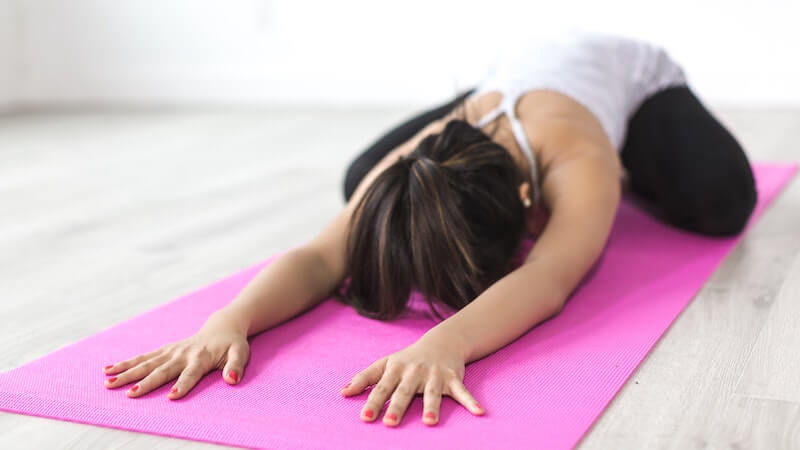Stretching 101
Episode #5 of the course Hack your workout: A self-paced system for core muscle and posture strength by John Robin
Welcome to Day 5 of our course!
Now that we’ve covered the eight strength exercises, it’s important to talk about stretching. Let’s dive into Stretching 101!
Why Stretch?
Stretching sends fresh blood to the muscles, allowing oxygen and waste exchange that helps the muscle fibers relax. If you don’t stretch your muscles enough, they get stiff.
This is especially true of the core posture muscles, since you use them all day in simple activities like standing, walking, and sitting. Even just holding your torso in an upright posture tires out the muscles of the neck, back, ribs, and hips.
The Five Stretching Exercises
Your strength exercises will help your core posture muscles last longer, while your stretching exercises will keep them loose. The five stretches in our microcycle, repeated ten times each, have been selected to accomplish this balance.
Overall, this duo works together to give you better posture by relaxing your core muscles. This, in turn, gives you ease of movement in your day-to-day life.
Hanging bar stretch. A hanging bar stretch involves hanging from the overhead bar on your power rack. Grip the bar with your palms facing away from you.
Hang. Your body will sway back and forth a little, like a pendulum.
Count the number of times you swing.
This stretch pulls your forearms, outer arms, shoulder muscles, rib muscles, and the muscles of your upper back. These muscles get locked up simply from having to hold your torso upright all day.
Start with hanging for ten swings and increase with practice.
Founder stretch. A founder stretch involves sitting back into a squat position, and reaching your arms up above your head until they are parallel with your torso. Your feet should angle out 45° and be shoulder-width apart. Sit back so you balance on your heels.
You’ll feel a pull in your upper back around the shoulder blades and ribs.
Pace this with your breath:
• Inhale and reach farther ahead with your hands, keeping your arms parallel to your torso.
• Exhale and sit back further, extending the stretch more to your middle and lower back.
This stretch helps with the posture muscles involved when you sit for long periods.
Start with three breaths. Increase the effectiveness of this stretch by increasing the number of breaths you complete.
Lunge stretch. A lunge stretch involves lunging forward on one leg and letting the back leg slide backward. Stretch your arms above your head and press your palms together, then stretch the arms slightly toward the forward leg until they hover over your knee.
You’ll feel a stretch in your ribcage, hip, and thigh on the side of your backward leg.
Use your breath to pace this:
• Inhale and stretch your hands up farther, deepening the stretch in your ribs and abs.
• Exhale and push your backward leg back farther, deepening the stretch in your hips and thigh.
Do one for each side.
This stretch helps with the muscles involved in locomotion.
Start with three breaths, then increase with practice.
Windmill stretch. A windmill stretch involves sitting back into a squat position, like with the founder stretch, except for two differences:
• Widen your legs as much as possible, the feet still angled out 45°.
• Spread your arms to either side, then swing them, like a windmill blade, so one touches the ground below your head, and the other is raised—the arms should form a vertical line between each hand.
You’ll feel a stretch through the shoulders, ribs, neck, and arms.
Use your breath to pace this:
• Inhale and stretch your upper arm straighter, creating more twist.
• Exhale and pull your hips back a bit more, lengthening your torso.
Do one for each side.
This stretch helps relax the muscles you tire out from working at a desk or laptop.
Start with three breaths, then increase with practice.
Woodpecker. A woodpecker stretch involves doing a slight lunge, then, holding that lunge, angling your torso at the hips until it is almost parallel with the floor. Stretch your arms forward until they are parallel with your torso, like a woodpecker beak.
You’ll feel this stretch in your hips and lower back.
Do one for each side. Use your breath to pace it:
• Inhale and reach your arms farther forward, stretching your lower back.
• Exhale and angle your torso forward more, stretching the hips.
This stretch helps relax the hip and lower back muscles that get tired from standing in one position.
Start with three breaths, then increase with practice.
Next Up
You can always do more stretches than these and seek out more advances to them. If you practice yoga, you’ll go deeper and get even more benefits, but don’t put off these stretches by waiting for the next yoga class.
Tomorrow, we’ll move on to the last part of the microcycle: cardio.
Recommended video
Share with friends

